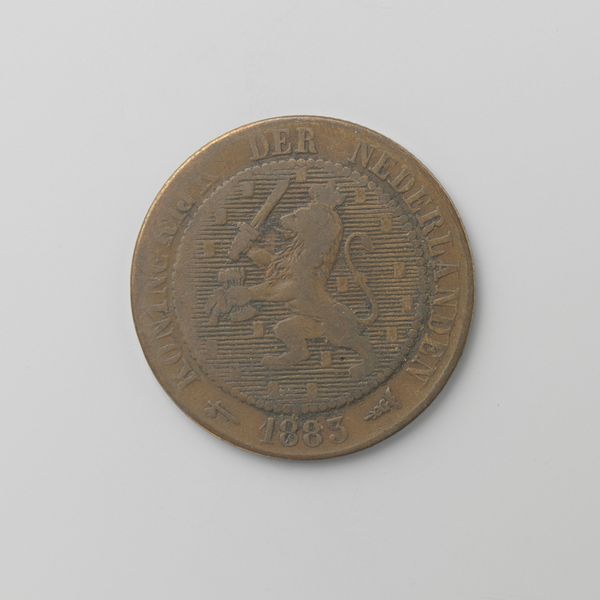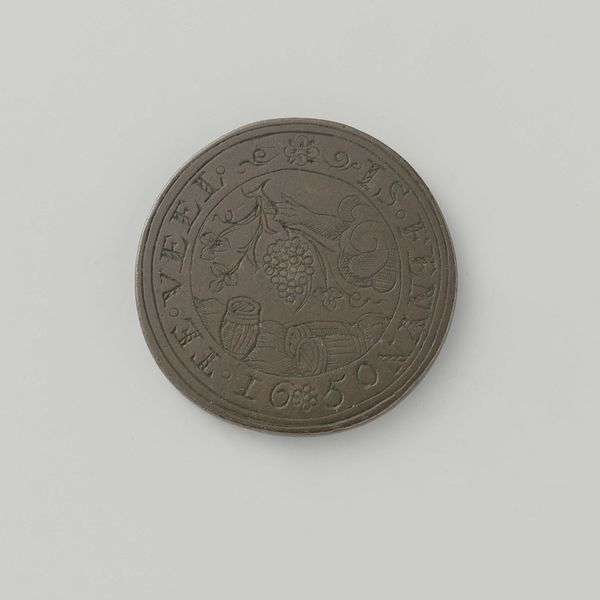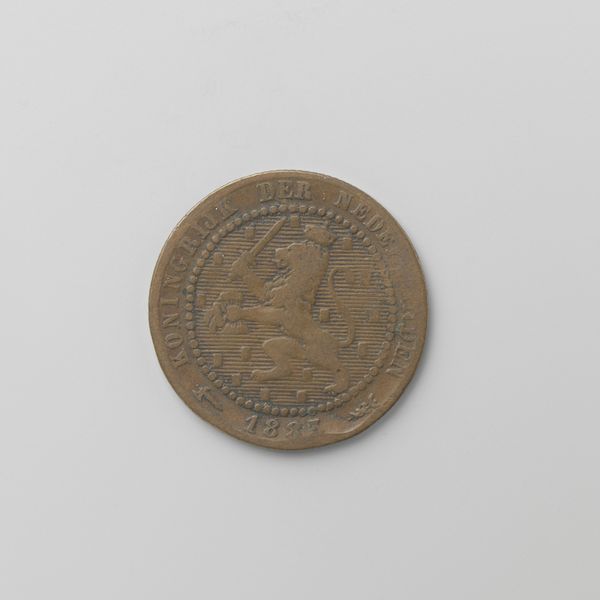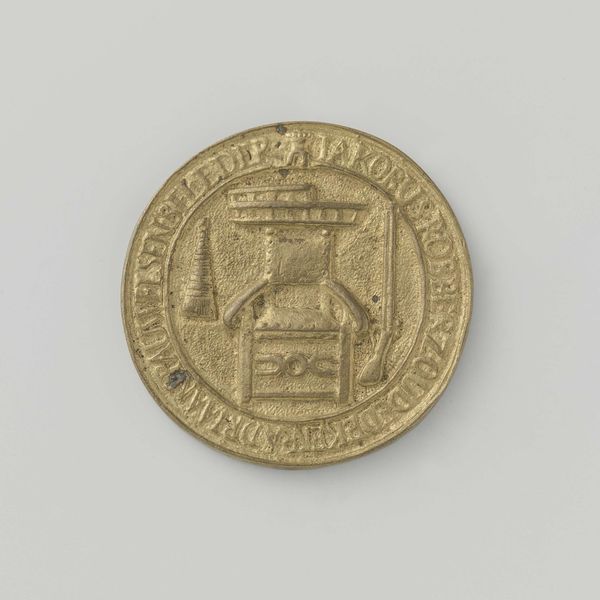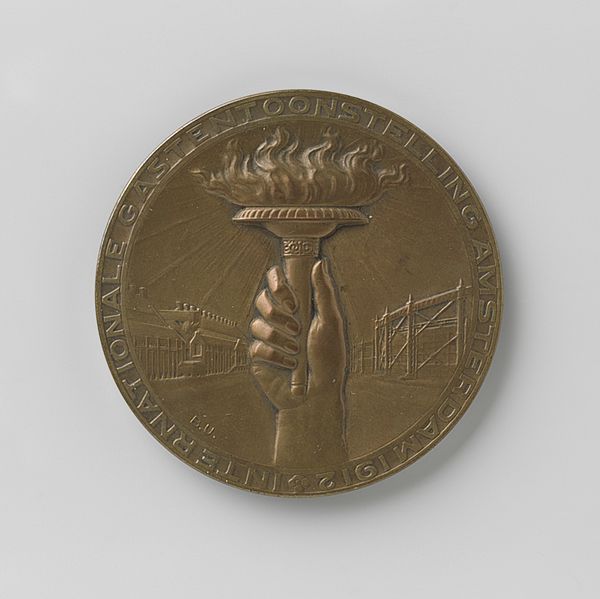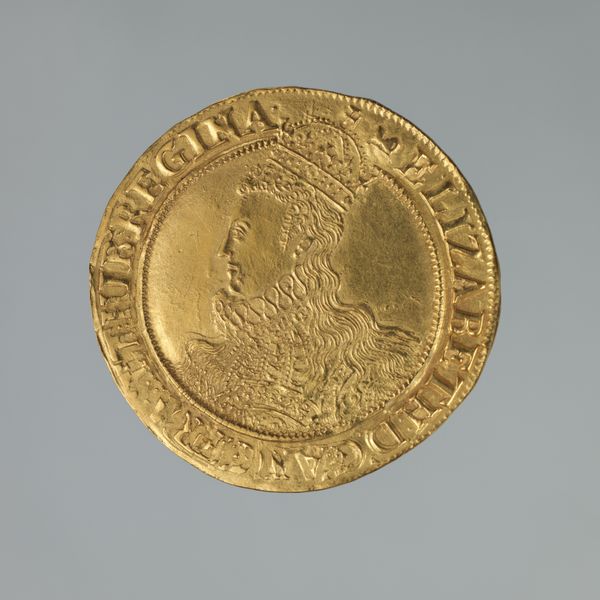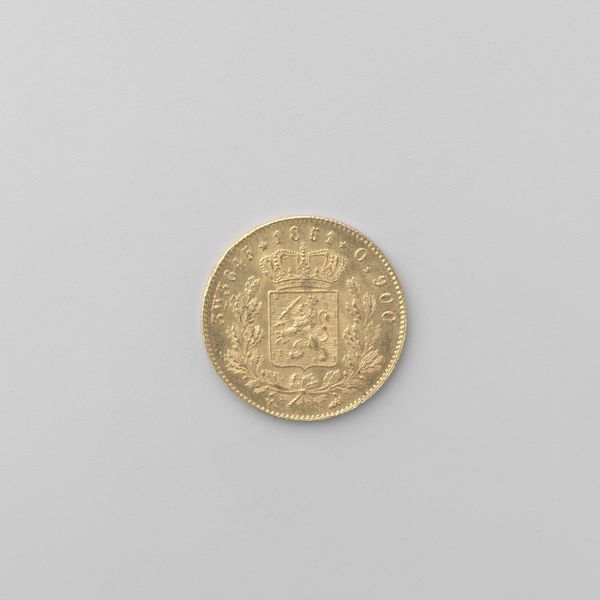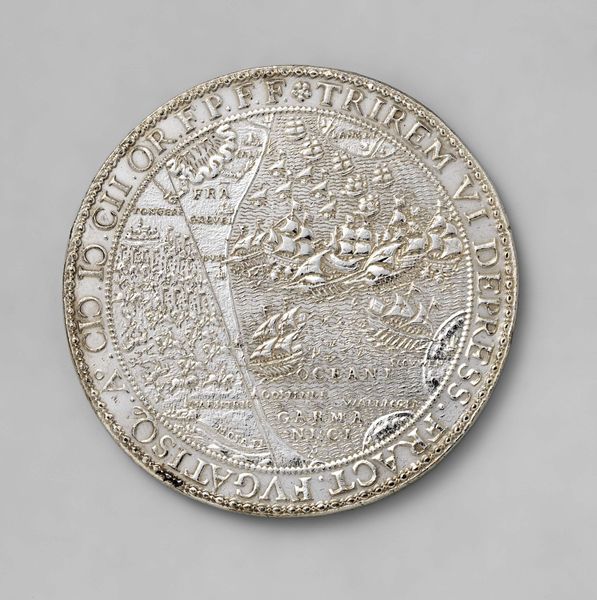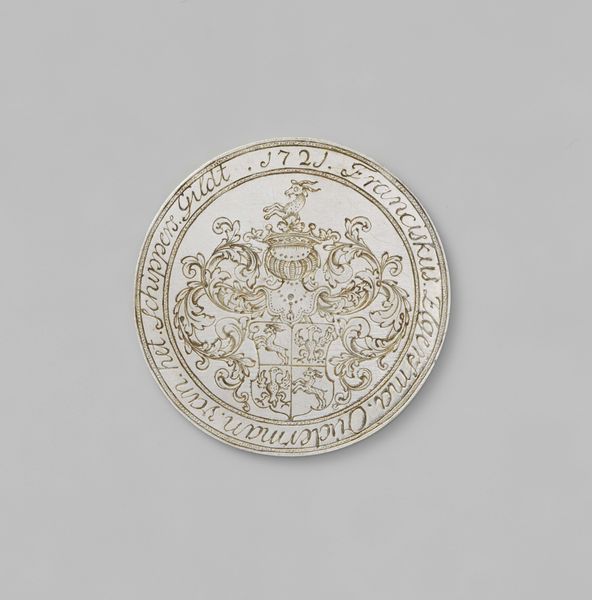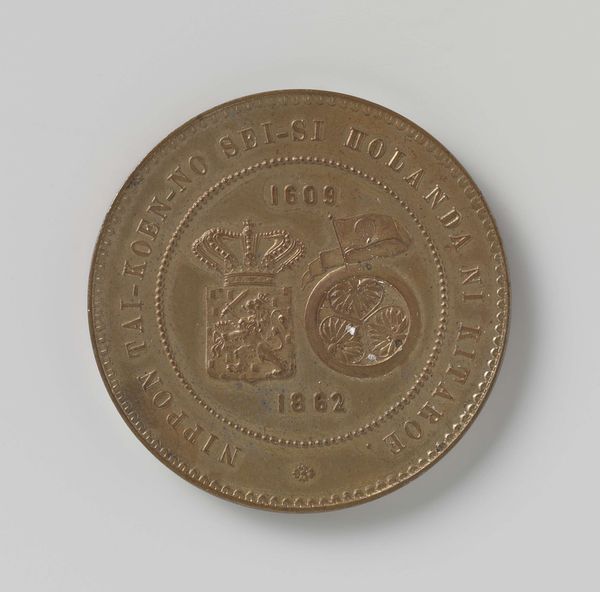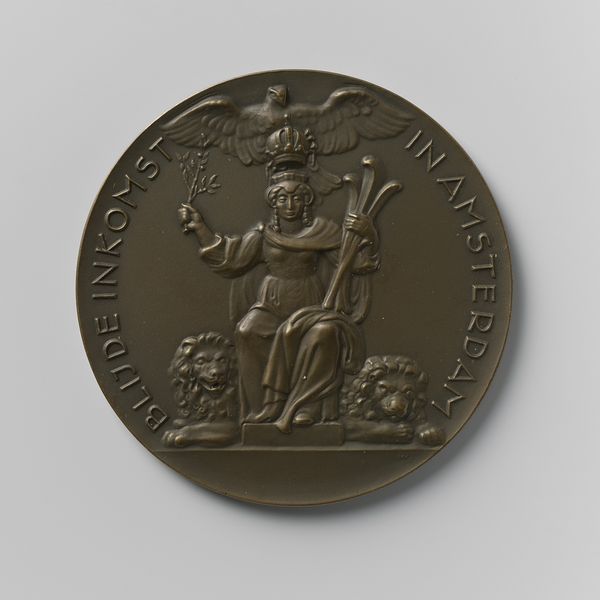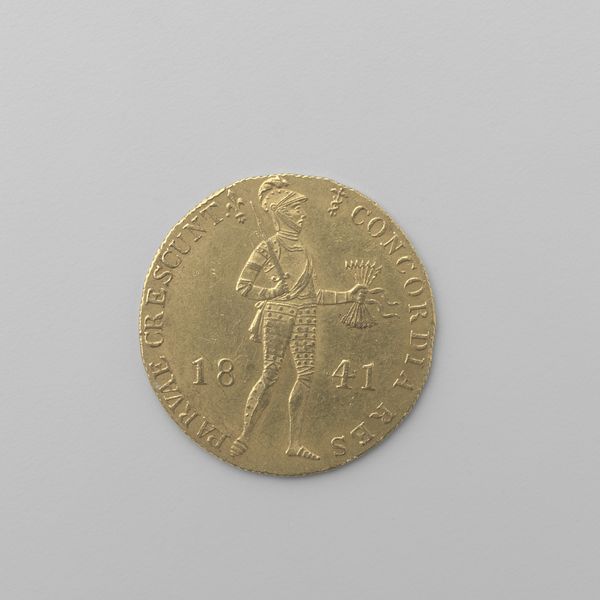
metal, photography
#
portrait
#
still-life-photography
#
metal
#
photography
#
history-painting
#
realism
Dimensions: diameter 2.35 cm, weight 4.00 gr
Copyright: Rijks Museum: Open Domain
This is a two-and-a-half cent coin, made of bronze in the Netherlands in 1886, during the reign of King Willem III. Coins like this one were produced through industrial processes, involving die-stamping and mass production. The bronze material, though common, was carefully selected for its durability and association with value. The coin’s design, featuring a lion and inscriptions, was meticulously engraved into the die, showcasing skilled craftsmanship adapted to mechanical reproduction. The coin is more than just currency; it is a symbol of Dutch identity and economic power during the late 19th century. Its creation reflects the complex relationship between artistry, industrialization, and national identity. It challenges traditional distinctions between craft and industrial production, highlighting the artistry embedded even in everyday objects. The coin encapsulates a time of industrial expansion, labor, and the rise of consumer culture. Considering the materials, making, and context of such items allows a deeper understanding of their historical significance.
Comments
No comments
Be the first to comment and join the conversation on the ultimate creative platform.

